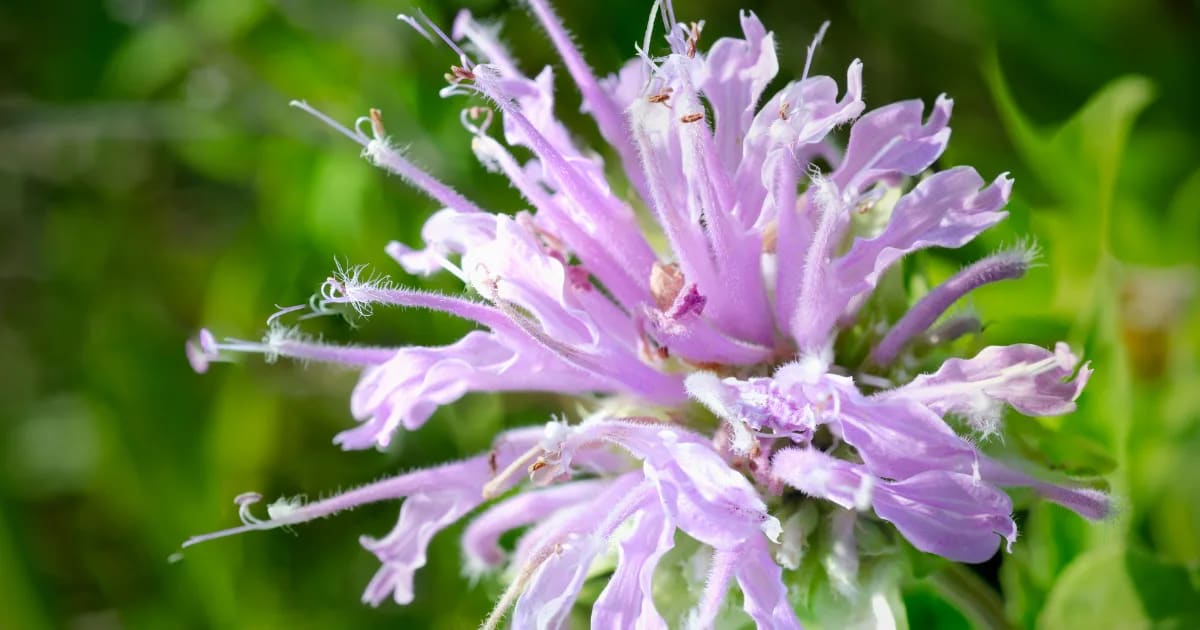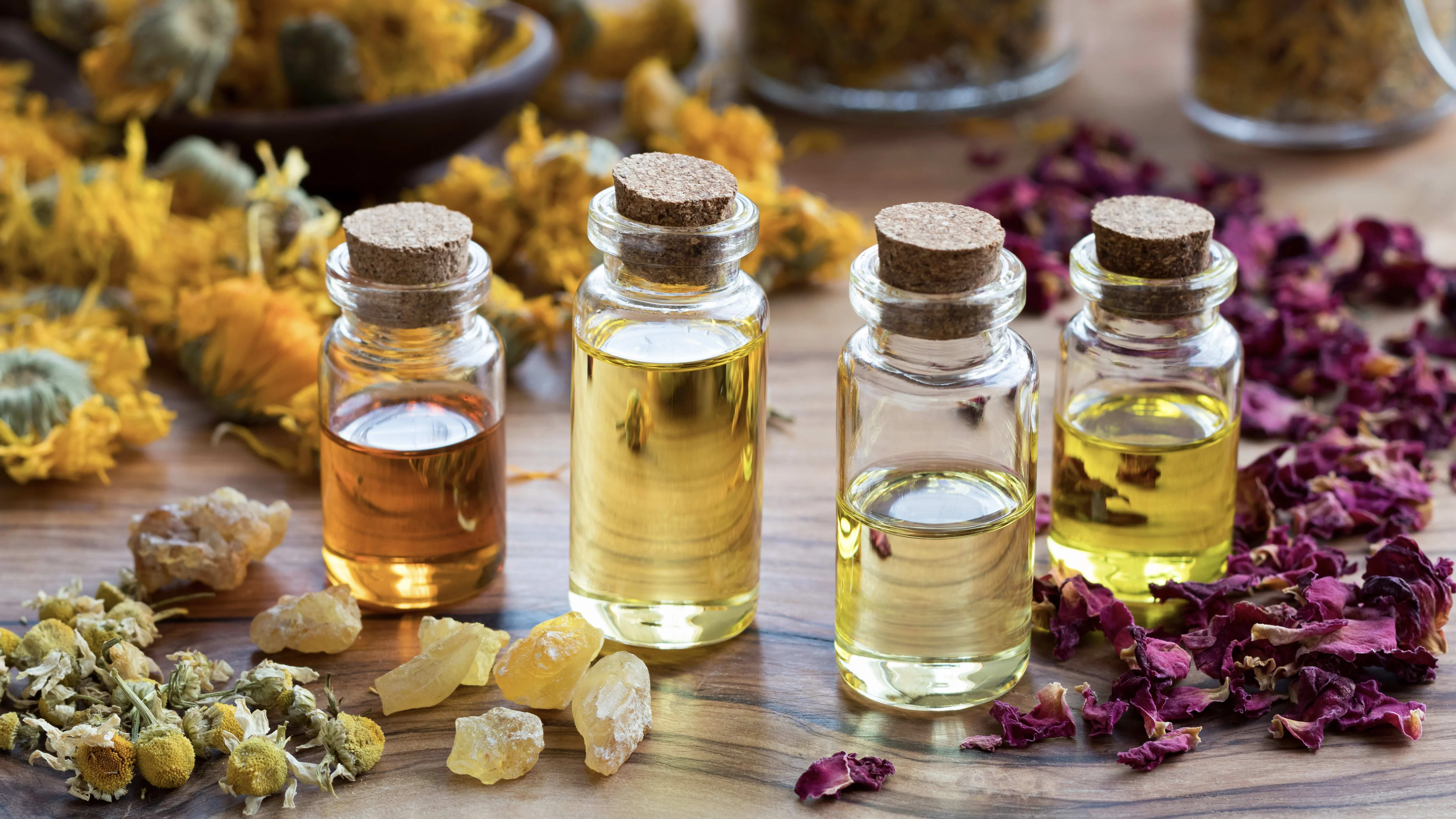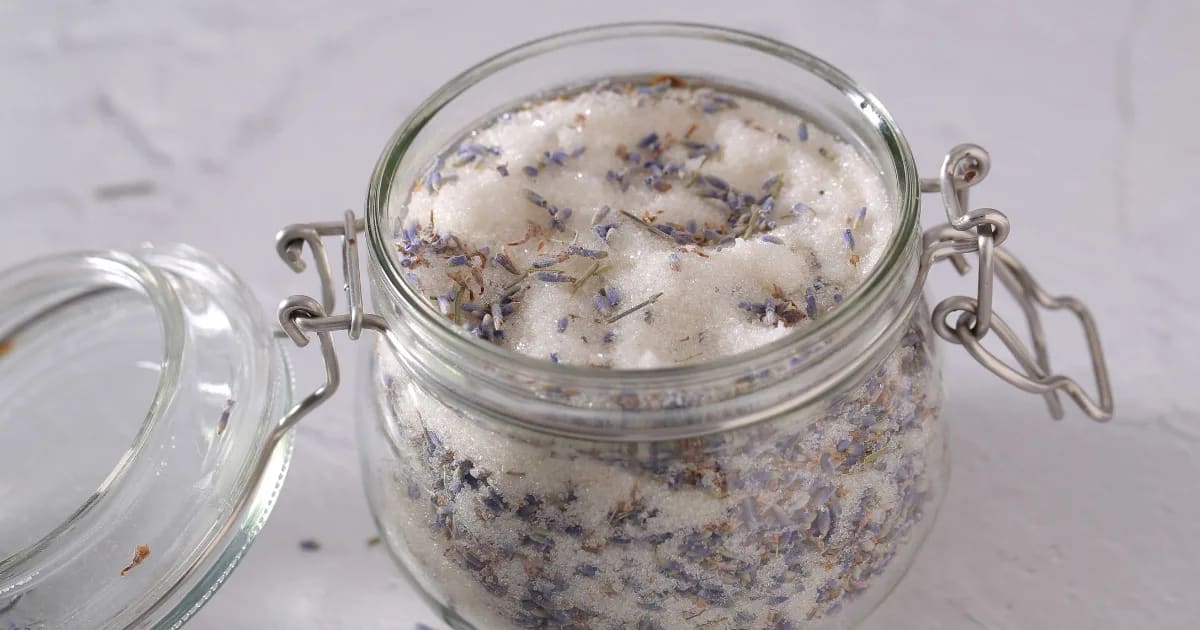Bee Balm Oil: Benefits & Uses of a Warrior Oil

Meet My New Favorite Antimicrobial Oil
I am privileged to have a friend in the Northwest US who distills artisan batches of hydrosols and essential oils. “Artisan” means she handcrafts her products in small batches. Each one is a work of art!
A few years ago, she reached out to me and asked if I would like some of the essential oil from her recent distillation of Bee Balm (Monarda fistulosa). I immediately said yes! I had never experienced Bee Balm and was thrilled to be offered this opportunity.
To say the oil impressed me would be an understatement! I knew right away I’d found a new favorite antimicrobial.
In this post, we’ll explore Bee Balm oil—its benefits, uses, and why it’s important to know the chemistry of the oil you’re buying. Bee Balm is a powerful antimicrobial, able to destroy bacteria, fungi, and some viruses—which is why I call it a “warrior oil.” We’ll discuss how it can help prevent infection in minor wounds, protect you during cold season, and more.
Here’s a fun fact about how it came to be named Bee Balm. It is also called “Wild Bergamot,” and the plants are often abuzz with bees who adore its irresistible aroma. But bees can sting! The leaves of the plant (either crushed or made into a tea and applied to the sting) can relieve the pain and swelling. Bee Balm nurtures the pollinators while also taking care of us!
Bee Balm’s Origins and Aroma
My Bee Balm comes from North America—specifically the Northwest United States. The Native Americans used it to prevent infections and as a mouth rinse to soothe sores.
Bee Balm is a member of the mint family (Lamiaceae), and its nuanced aroma reflects this. It has a light herbal scent reminiscent of Thyme ct thymol (Thymus vulgaris ct thymol), accompanied by layers of mint, a hint of citrus (hence its name “Wild Bergamot”), and deepened with a rich earthy heart note.
Bee Balm, which thrives in both France and Canada, exhibits striking differences from its North American counterpart.
Variations in Bee Balm’s Chemistry
When I looked at my Bee Balm oil’s GC/MS report (a GC/MS is a lab report that lists the components in an essential oil), I saw that it contained a lot of phenols. These are molecules that often show up in strong antimicrobials. Bee Balm’s chemistry reminded me of Oregano oil (Origanum vulgare), one of the most phenol-rich oils!
Looking at all those phenols, I knew I’d found a “warrior oil” to use against microbes and infection. Two powerful phenols in North American Bee Balm oil are carvacrol and thymol.
Carvacrol has impressed researchers! Even small concentrations of carvacrol have been shown to inhibit infection-causing bacteria, like Staphylococcus and Salmonella. It can also interrupt the formation of flagella in E. coli bacteria, which means the bacteria can’t move around anymore. Plus, carvacrol is a potent antifungal.
Thymol has similar benefits. As with carvacrol, research has shown that even small amounts of this potent component inhibit strong bacteria, viruses, and fungi. When I see thymol in an oil, I know I can trust it to prevent infections. Combine it with carvacrol, and we have a powerhouse oil!
One study found that carvacrol and thymol “completely inhibited mycelial growth of 17 pathogenic fungi.” Those are amazing results!
Bee Balm also contains γ-terpinene. This little molecule isn’t a phenol, but a monoterpene with wonderful antioxidant activity. That means it fights free radicals—rogue molecules that damage healthy cells.
As I was learning about Bee Balm oil, I discovered that the French and Canadian varieties have a notably different chemistry than my North American Bee Balm oil. Rather than being rich in phenols, French and Canadian Bee Balm are brimming with gentler monoterpenols. This gives the French and Canadian oil their own unique aroma and a different scope of application.
Because the oils are so different, it’s important to check the GC/MS report of the Bee Balm oil you’re buying.
Therapeutic Uses
Here are a few ways I like using North American Bee Balm oil. I’ll share recipes for these in the coming weeks!
Wound care: Bee Balm can help prevent infection in minor cuts and scrapes. Carvacrol and thymol work together to inhibit bacteria and fungi that find their way into shallow wounds. Because phenols are harsh, blend Bee Balm into a skin-soothing base of hydrosol and aloe vera gel for wound care.
Natural cleaning: Of course, antimicrobial phenols are excellent at getting germs out of your home! Use Bee Balm oil in blends to clean your counters and even your bathroom. It is an excellent airborne antimicrobial, too.
Cold and flu care: Trust Bee Balm to protect your health during cold and flu season. Its airborne antimicrobial properties help to eliminate infectious pathogens in the environment. And if you do come down with something, Bee Balm’s germ-fighting actions can support a faster recovery.
Antioxidant: Thanks to γ-terpinene, Bee Balm protects the integrity of cells throughout your body—especially your skin—offering resilience and strength.
Soothe anxiety: A study observing mice navigating a maze showed that carvacrol notably reduced anxiety-like behavior, demonstrating the potential anxiolytic activity of this component.
Bee Balm Safety Guidelines
Oils rich in phenols have safety concerns and should be used with great respect.
Carvacrol and thymol can irritate skin and mucous membranes. Use Bee Balm essential oil at a 1% concentration in your blends—that’s 5 or 6 drops in 1 oz (30 ml) of carrier.
I like blending Bee Balm with skin-nourishing ingredients to offset the aggressive nature of its phenols. Rich carriers, like shea butter and jojoba oil, can protect your skin, while skin-supportive essential oils, such as Lavender (Lavandula angustifolia), calm irritation and help skin heal.
My Takeaway
Exploring Bee Balm has been fascinating; the oil continually unveils its beauty each time I open the bottle!
This extraordinary essence is a true warrior in the battle against microbes.
With safe and thoughtful use, it will act as a natural guardian of your well-being. Stay tuned for upcoming recipes that transform the power of Bee Balm into tangible solutions for your wellness journey!
References
Bekka-Hadji, F., Bombarda, I., & Touati, A. (2016). Antibacterial activity against methicillin-resistant Staphylococcus aureus of five essential oils from Algerian medicinal plants (Lamiaceae). Journal of Essential Oil Research, 1-10.
Bouchra, C., Achouri, M., Hassani, L. I., & Hmamouchi, M. (2003). Chemical composition and antifungal activity of essential oils of seven Moroccan Labiatae against Botrytis cinerea Pers: Fr. Journal of ethnopharmacology, 89(1), 165-169.
Burt, S. A., van der Zee, R., Koets, A. P., de Graaff, A. M., van Knapen, F., Gaastra, W., Haagsman, H.P., & Veldhuizen, E. J. (2007). Carvacrol induces heat shock protein 60 and inhibits synthesis of flagellin in Escherichia coli O157: H7. Applied and environmental microbiology, 73(14), 4484-4490.
Inouye, S., Takizawa, T., & Yamaguchi, H. (2001). Antibacterial activity of essential oils and their major constituents against respiratory tract pathogens by gaseous contact. Journal of antimicrobial chemotherapy, 47(5), 565-573.
Kordali, S., Cakir, A., Ozer, H., Cakmakci, R., Kesdek, M., & Mete, E. (2008). Antifungal, phytotoxic and insecticidal properties of essential oil isolated from Turkish Origanum acutidens and its three components, carvacrol, thymol and p-cymene. Bioresource Technology, 99(18), 8788-8795.
Melo, F. H. C., Venâncio, E. T., De Sousa, D. P., De França Fonteles, M. M., De Vasconcelos, S. M. M., Viana, G. S. B., & De Sousa, F. C. F. (2010). Anxiolytic‐like effect of Carvacrol (5‐isopropyl‐2‐methylphenol) in mice: involvement with GABAergic transmission. Fundamental & clinical pharmacology, 24(4), 437-443.
Miladi, H., Zmantar, T., Kouidhi, B., Al Qurashi, Y. M. A., Bakhrouf, A., Chaabouni, Y., Mahdouani, K., & Chaieb, K. (2017). Synergistic effect of eugenol, carvacrol, thymol, p-cymene and γ-terpinene on inhibition of drug resistance and biofilm formation of oral bacteria. Microbial pathogenesis, 112, 156-163.
Nostro, A., Blanco, A. R., Cannatelli, M. A., Enea, V., Flamini, G., Morelli, I., Roccaro, A.S., & Alonzo, V. (2004). Susceptibility of methicillin-resistant staphylococci to oregano essential oil, carvacrol and thymol. FEMS Microbiology Letters, 230(2), 191-195.
Rota, M.C., Herrera, A., Martinez, R.M., Sotomayor, J.A. and Jordán, M.J. (2008) Antimicrobial activity and chemical composition of Thymus vulgaris, Thymus zygis and Thymus hyemalis essential oils. Food Control 19, 681-687
Solórzano-Santos, F., & Miranda-Novales, M. G. (2012). Essential oils from aromatic herbs as antimicrobial agents. Current opinion in biotechnology, 23(2), 136-141.





